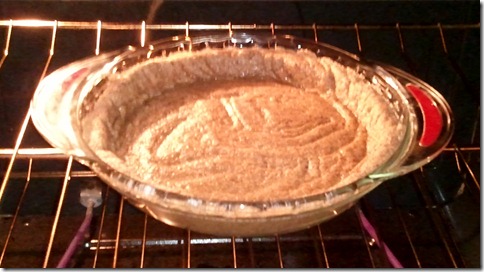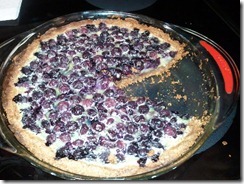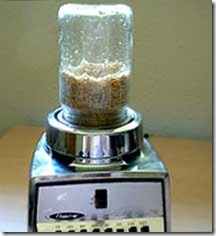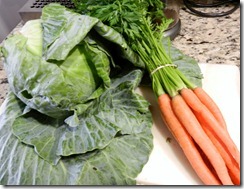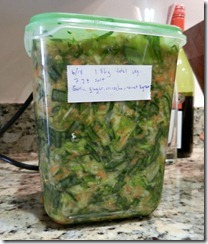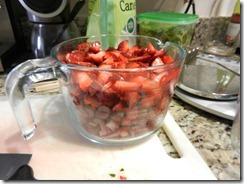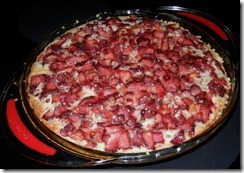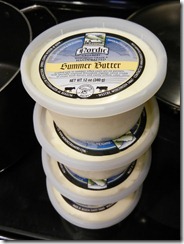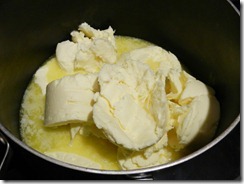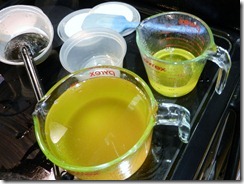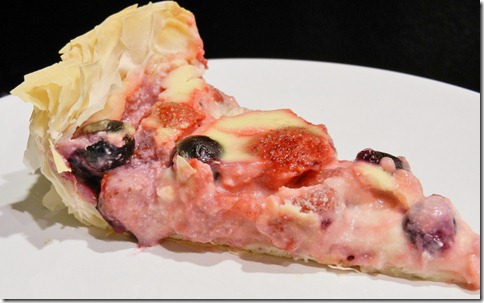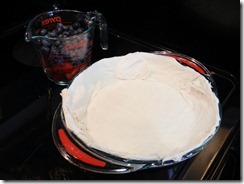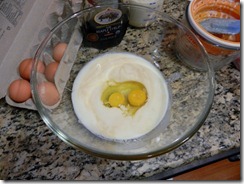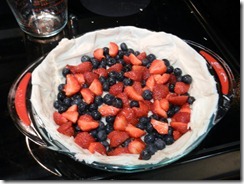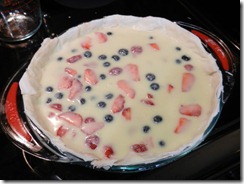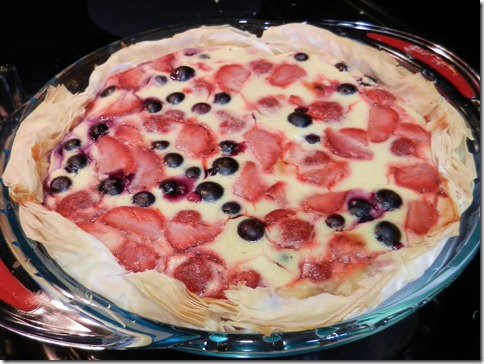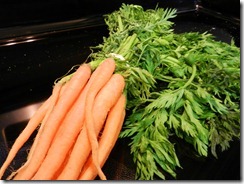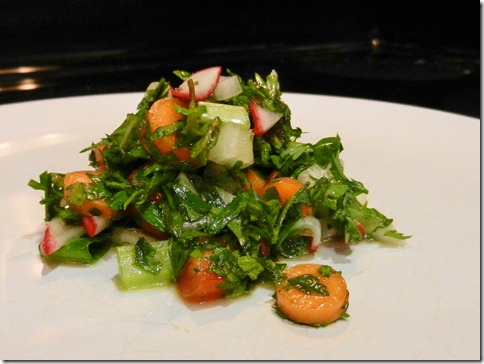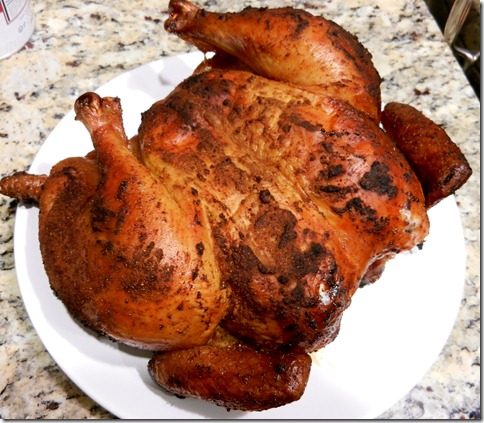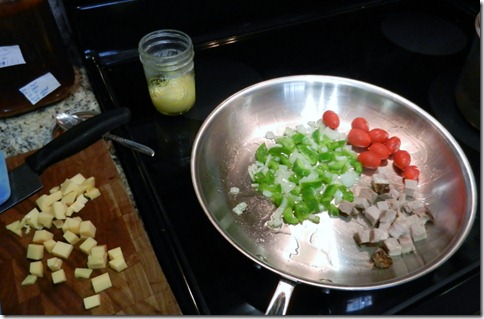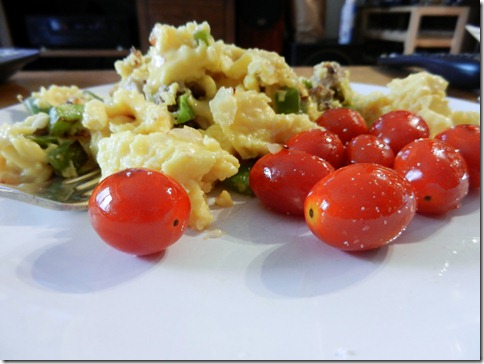- 2 cups almond meal
- 1t salt
- 1/2 cup shredded coconut
- 1/4 cup coconut oil
- 2T creamy almond butter
- 1 egg
- 2T sugar
Mix well. Press into a pie pan, bake for 20 to 25 minutes in a preheated 350ºF oven.
If you're making a custard-based pie, pour the filling into the HOT crust.
Blueberry Pie
- 3 cups blueberries
- 1 cup sugar
- 2 eggs
- 1 1/2T corn starch*
- 1/2 cup milk*
Whisk everything except fruit together well. Fold in fruit. Pour into HOT almond meal pie crust. Bake for 50 minutes at 350ºF.
*The original recipe I have calls for 2 1/2T flour and 1/2 cup whipping cream. This adaptation uses corn starch (gluten free) and milk (because I didn't want to go to the store). It's better with cream, but works fine with milk.
Thoughts: This is great! My first attempt at almond meal crust turned to mush with the same custard filling. This one had considerably more heft and held up to the liquid. It borrowed some concepts from Mark Sisson's Primal Energy Bar, and frankly could be a meal in itself. The crust crumbles under the fork but is hefty enough to come out in clean slices. I'm very pleased.
